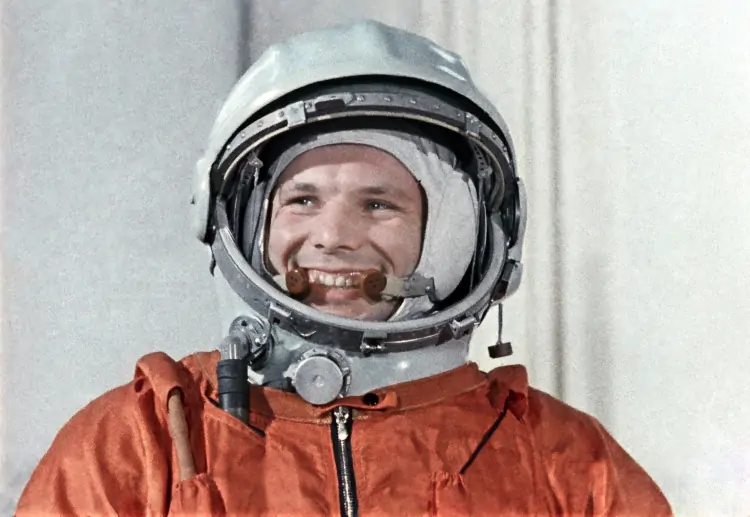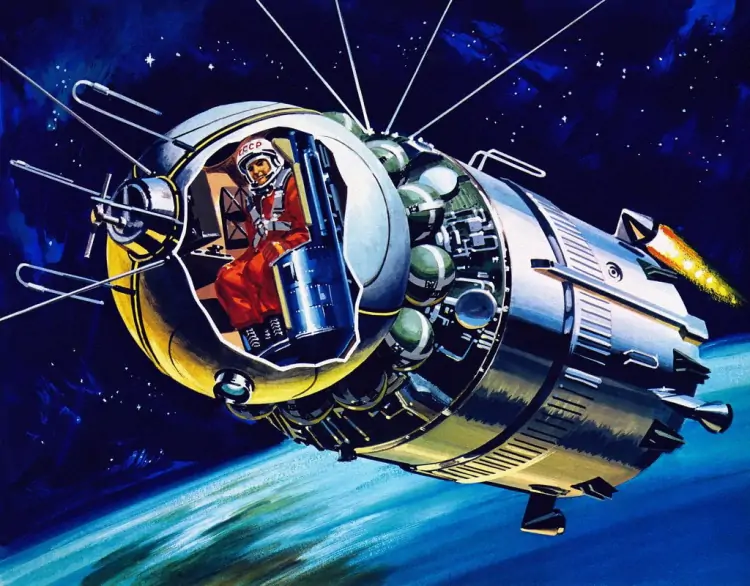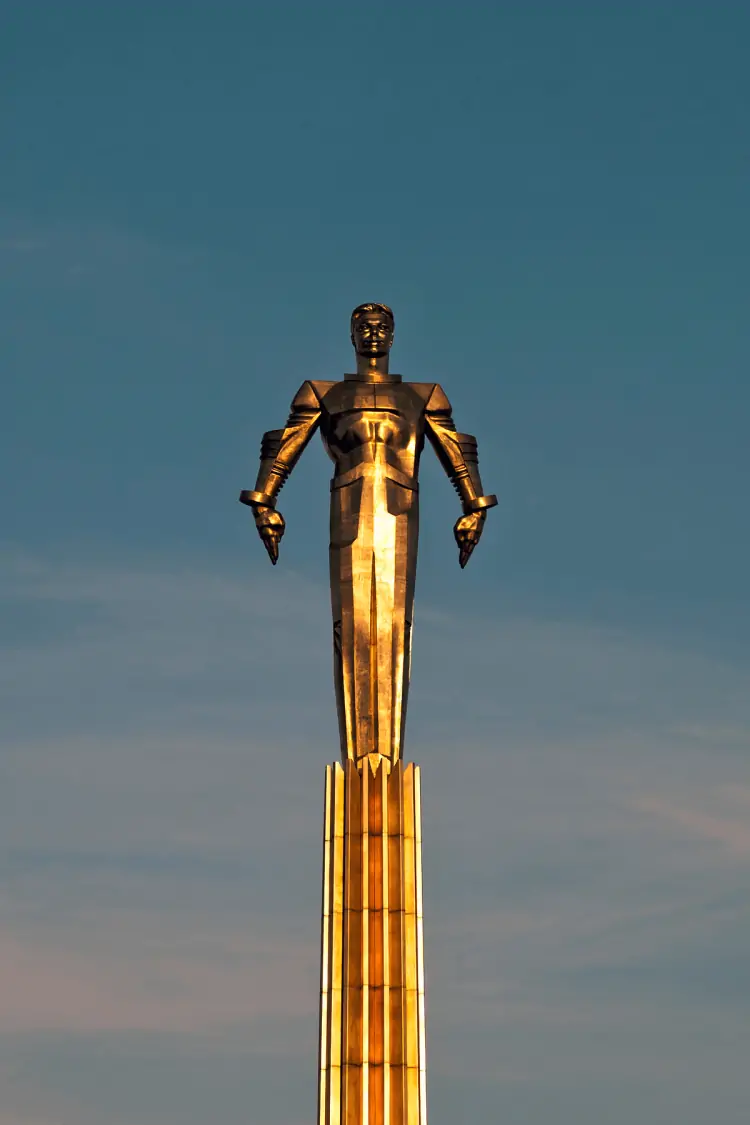Under what conditions did Yuri Gagarin make the first human spaceflight 60 years ago?
These words in David Bowie's "Space Oddity" must be a summary of how Gagarin felt when he made the first ever space trip. With a narrow, two-meter-diameter spacecraft, Gagarin went into space more as a passenger than a cosmonaut. "Pilot" hasn't even touched the control mechanisms on the spacecraft.

Exactly 60 years have passed since Russian cosmonaut Yuri Gagarin made his space trip.
"Here, I'm sitting in a small box, right above the earth. The planet Earth is blue, and there's nothing to do.”
These words in David Bowie's "Space Oddity" must be a summary of how Gagarin felt when he made the first ever space trip. With a narrow, two-meter-diameter spacecraft, Gagarin went into space more as a passenger than a cosmonaut. "Pilot" hasn't even touched the control mechanisms on the spacecraft.
According to his communication with the ground control station, Gagarin was impressed by the beautiful aura of our planet, which he saw from the window of the capsule, as well as the shadow of the clouds on the Earth's surface. Gagarin's trip to space on April 12, 1961, and his safe return to Earth were an irrefutable victory for the Soviet Union over the United States. But in order to write history, Gagarin took on a dangerous task that required tremendous courage. He traveled into space, a mysterious place about which he knew very little at the time, on a space shuttle without rescue control.
Meanwhile, the rocket that would launch him made numerous failed attempts until it was successful. Gagarin was a kind of cobay mouse, and its task was to answer some questions: could humans survive in space? Could they complete their spacecraft journey? Could they communicate effectively with Earth to ensure a safe space landing? At that time, no one had any confidence in secure rockets, space spaces, communications control systems, or even that humans could survive in space.
"If presented to scientists today, none of them would approve the shipment into space," engineer Boris Chertok said in his book "Rockets and People" about the spacecraft Vostok. "I would never do that today," Chertok said, recalling that he signed documents on the reliability of the spacecraft. I've gained a lot of experience and realized how much risk I'm taking," he says.
Vostok failures
The Vostok launch vehicle, where the spacecraft of the same name was mounted, was based on the R-7 rocket, a two-stage intercontinental ballistic missile that was first used in August 1957.
The same year, Sputnik 1, the first artificial Earth satellite, was derived from the R-7. In fact, it was concluded that the design of the R-7 was very successful. This R-7 family of missiles is still the only one used in Russia for human space flights, and has proved to be reliable in delivering the spacecraft into orbit, even though it fills its mandate.
But in 1961 things were much different.
- How did Gagarin see the world from outer space 50 years ago?
- What was Apollo 11 looking for on the moon 50 years ago?

In his book, Chertok describes these differences as follows:
"Before 1961, we had no reason to be optimistic about modern rocket safety standards. We made at least eight successful launches in a row that year."
"But only in 1960 five satellites were launched. Four of these were airborne. Only three of them left Earth's orbit, while the two managed to reach the target. As a result, only one of them was able to land properly while returning to Earth.”
The Vostok programme was first launched on May 15, 1960, less than a year before Gagarin's mandate.
A lifeless pattern was placed inside the jacket. The Mecca left Earth's orbit, but did not return. The routing systems failed.
A large number of dogs were used in experimental space flights during those years. The scientists did these tests with dogs because they thought they could succeed in the face of prolonged immobility.
In the only successful flight in 1960, the dogs Belka and Strelka flew into space on 19 August and were able to return.
Subsequent attempts, however, were less successful.
On 1 December, the spacecraft, carrying two dogs, Pchyolka and Mushka, failed to return to its calculated orbit. The space, which was beginning to descend beyond the borders of the Soviet Union, along with the dogs in it, was destroyed so that Soviet technology would not be stolen by other countries.
'Nearly' perfect
During Gagarin's flight on April 12, 1961, the rocket performed "almost" perfectly. But there's nothing insignificant about space technology, and it could have cost Gagarin "almost" his life.
Amid many technical difficulties, the spacecraft entered orbit at a higher orbit than expected.
There was a brake system, but if it didn't work, Gagarin would have to wait for the spacecraft to descend and return to Earth.
Despite the fact that Vostok had oxygen, food, and water in it for more than a week, the high-speed release would have made it longer to start lowering the spacecraft.
After that, Gagarin's supply could end and he could die. Fortunately, the brakes worked.

The cables connecting the spacecraft's capsule to the service module could not be separated until Gagarin returned to Earth. As a result, Gagarin's capsule unexpectedly loaded an extra module when it landed.
The temperatures in the capsule rose dangerously, and Gagarin turned around crazy, losing little consciousness.
In a later statement, Kozmonot described those moments as follows:
"I was in a cloud of flame leading to the world.”
Ten minutes later, the cables finally burned and the capsules separated.
Gagarin opened the parachute before the capsule fell to the ground and landed in a safe area near the Volga River.
This violated the International Federation of Aviation's (FAI) requirement that the astronaut land on the ground in order to accept a space flight.
Officials refused to admit that Gagarin made the last few kilometres with a spacecraft.
However, the FAI approved Gagarin's space flight records and subsequently changed the requirement to "the return of the pilot".
And finally
Gagarin, the son of a peasant couple, went into space anonymously, but on his return he was the most famous man on the planet.
This flight brought Gagarin a national heroism and a worldwide fame. He then traveled to many different places, including Czechoslovakia, Bulgaria, Finland, Great Britain, Iceland, Cuba, Brazil, Canada, Hungary, and India, to announce this great success of the Soviet Union..
Elena Gagarina, an art historian and daughter of Gagarin, told the BBC in 2011 that the flight changed their lives.
"It was extremely difficult for my mom and dad to have a private life. They had very few opportunities to stay alone after the flight."
"Even if he had planned something for himself, it would have surrounded him with people who wanted to see him, talk to him, and touch him. My father understood that this was part of his job, and he didn't refuse.”
Despite Gagarin's desire to fly again, he was banned from any space flight because of his national hero status.
He attended the training of other cosmonauts and enrolled at the Zhukovsky Institute of Aeronautical Engineering, a prestigious school. He graduated with an honorary degree in 1968.
In March of the same year, he performed a routine training flight with a MIG-15 model aircraft. However, he and his assistant pilot died as a result of the plane crash. He was 34 when he died.
Source: BBC Science









